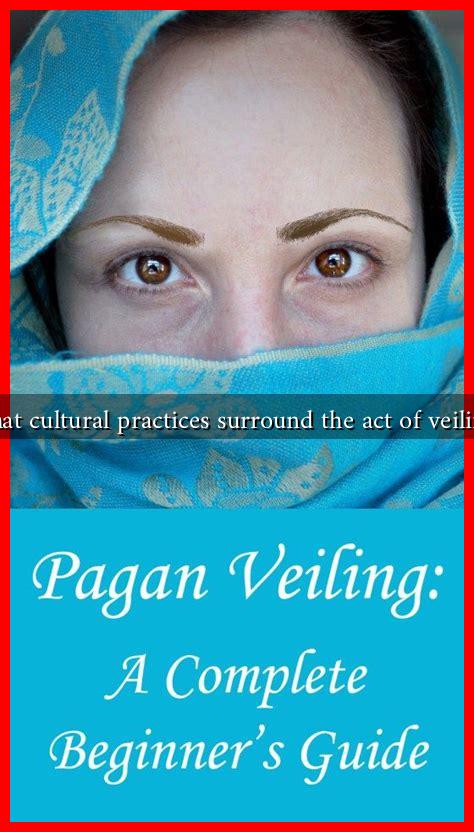-
Table of Contents
What Cultural Practices Surround the Act of Veiling?
The act of veiling, often associated with various religious and cultural traditions, is a complex practice that transcends mere clothing. It encompasses a range of beliefs, values, and social norms that vary significantly across different cultures and communities. This article explores the multifaceted cultural practices surrounding veiling, examining its significance, variations, and the debates it incites in contemporary society.
The Significance of Veiling
Veiling is often seen as a symbol of modesty, identity, and spirituality. For many women, it serves as a means of expressing their faith and cultural heritage. The significance of veiling can be understood through several lenses:
- Religious Identity: In Islam, veiling is often associated with the hijab, which signifies a woman’s commitment to her faith. It is seen as an act of obedience to God and a way to maintain modesty.
- Cultural Heritage: In many cultures, veiling is a traditional practice that reflects historical customs and societal norms. For instance, the chador in Iran and the dupatta in South Asia are deeply rooted in their respective cultures.
- Personal Empowerment: Some women view veiling as a form of empowerment, allowing them to take control of their bodies and how they present themselves to the world.
Variations in Veiling Practices
Veiling practices are not monolithic; they vary widely across different cultures and religious sects. Here are some notable examples:
- Hijab: Commonly worn by Muslim women, the hijab covers the hair and neck but leaves the face visible. It is often associated with modesty and piety.
- Burqa: A full-body covering that includes a mesh screen over the face, the burqa is primarily worn in Afghanistan and is often linked to specific interpretations of Islamic law.
- Niqab: This veil covers the face, leaving only the eyes visible. It is prevalent in some Arab countries and among certain Muslim communities.
- Chador: Worn by many Iranian women, the chador is a full-body cloak that leaves the face exposed. It is often associated with cultural identity rather than strict religious adherence.
Case Studies: Veiling in Different Contexts
To understand the cultural practices surrounding veiling, it is essential to examine specific case studies that highlight its diverse meanings:
- Turkey: In Turkey, the hijab has been a contentious issue, particularly in the context of secularism. The ban on headscarves in public institutions has sparked debates about personal freedom and state control.
- France: The French government has implemented laws prohibiting the wearing of conspicuous religious symbols in public schools, including the hijab. This has led to discussions about secularism, integration, and individual rights.
- Saudi Arabia: In Saudi Arabia, the abaya is a mandatory garment for women, reflecting the country’s strict interpretation of Islamic law. However, recent reforms have allowed women more freedom in choosing their attire.
Contemporary Debates Surrounding Veiling
The practice of veiling has become a focal point for discussions on feminism, freedom of choice, and cultural identity. Some key debates include:
- Feminism vs. Tradition: Feminists are divided on the issue of veiling. Some argue that it is a symbol of oppression, while others contend that it can be a choice that empowers women.
- Islamophobia: In many Western countries, veiling has been stigmatized, leading to discrimination and prejudice against Muslim women. This has raised questions about cultural sensitivity and acceptance.
- Legal Implications: Laws regulating veiling practices have sparked legal battles and protests, highlighting the tension between individual rights and societal norms.
Conclusion
The act of veiling is a rich tapestry of cultural practices that reflect a myriad of beliefs, values, and identities. While it is often viewed through the lens of religion, its significance extends beyond faith to encompass cultural heritage and personal empowerment. As societies continue to grapple with issues of identity, freedom, and acceptance, the discussions surrounding veiling will remain relevant and complex. Understanding the diverse practices and meanings associated with veiling is crucial for fostering dialogue and promoting cultural sensitivity in an increasingly interconnected world.
For further reading on the cultural implications of veiling, you can explore resources from organizations such as UN Women and Human Rights Watch.


